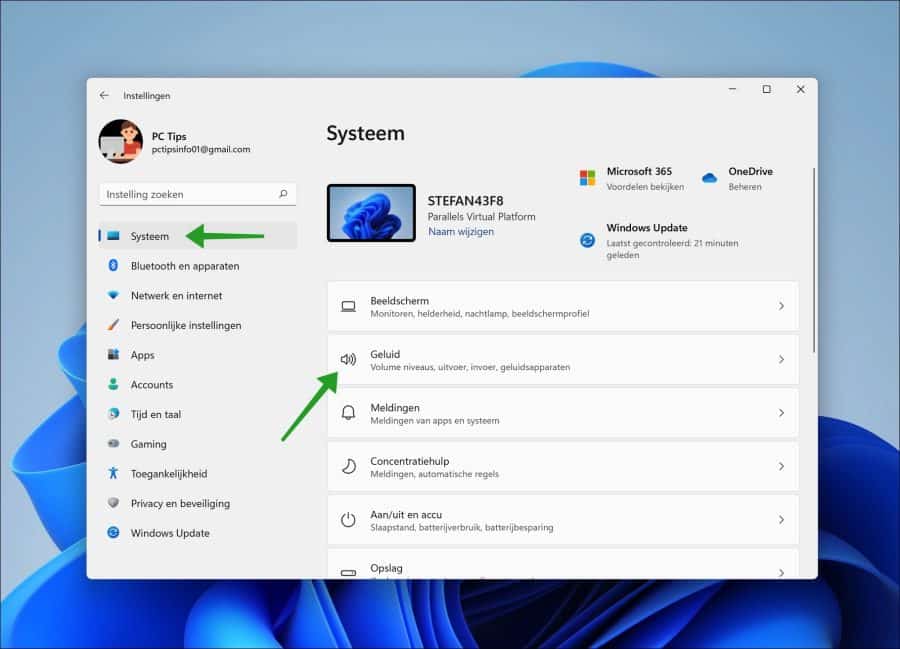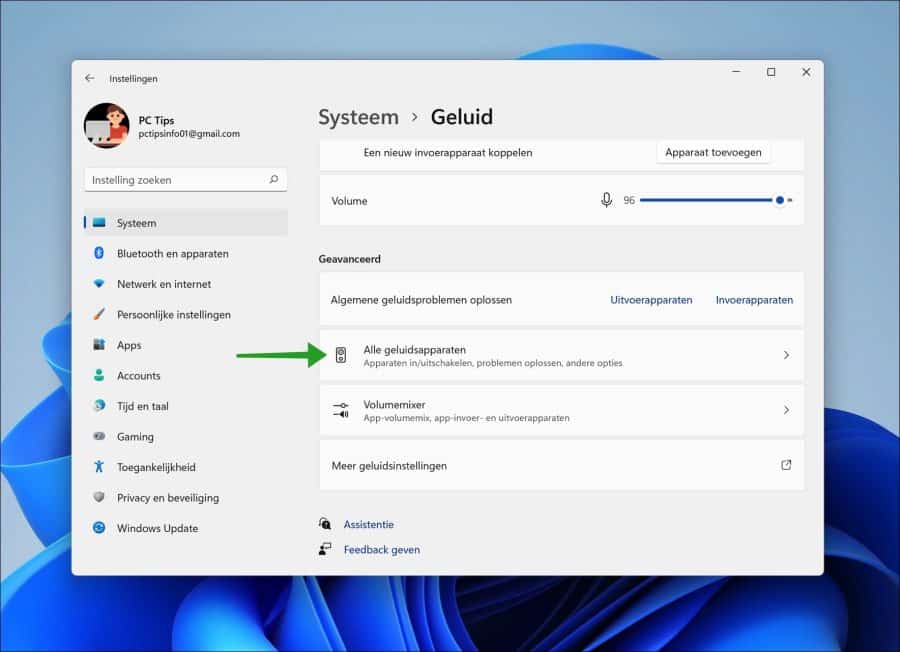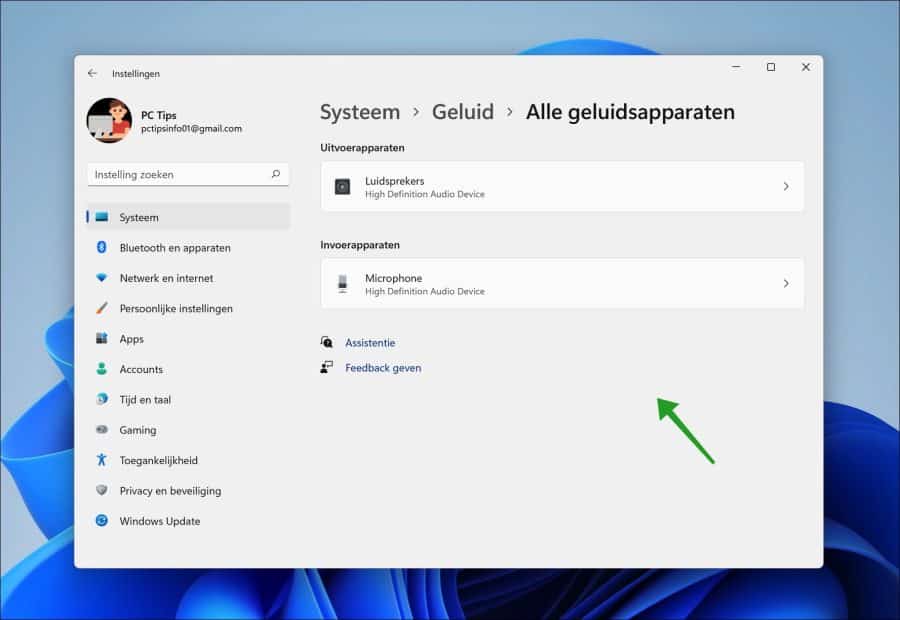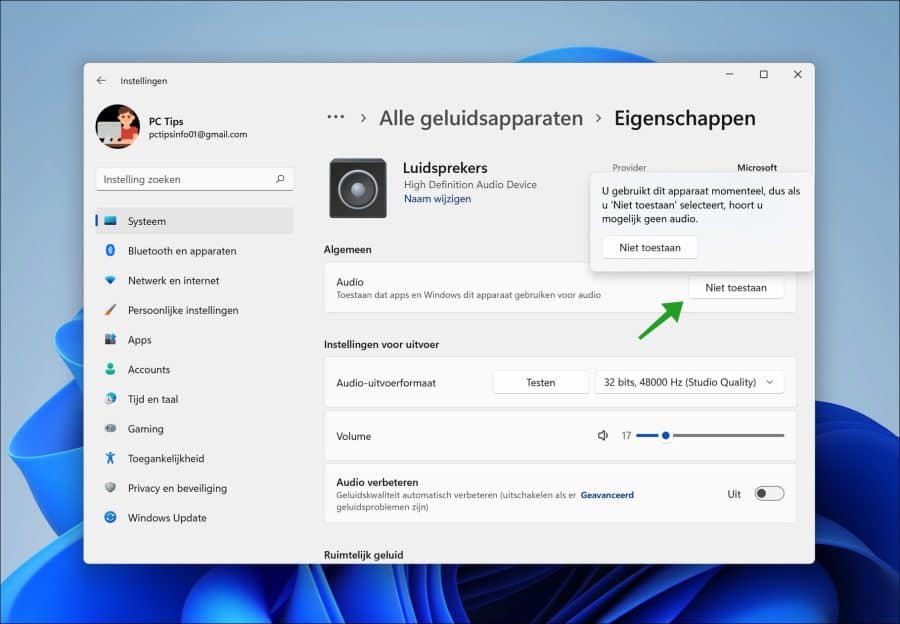Als u meerdere audio apparaten heeft geïnstalleerd dan kunt u zelf beheren of deze audio apparaten ook wilt gebruiken. Door een specifieke luidspreker, koptelefoon of ander uitvoerapparaat in- of uit te schakelen in Windows 11 gebruikt u alleen dit apparaat voor audio uitvoer.
Door een audio apparaat uit te schakelen verwijderd u het apparaat niet van uw computer. U schakelt het uit, en daarmee voorkomt u dat Windows 11 naar dit audio apparaat kan wisselen. Dit is bijvoorbeeld aanbevolen als u meerdere speakers heeft geïnstalleerd, maar ze niet allemaal gebruikt. Het wil nog wel eens voorkomen dat Windows 11 automatisch wisselt naar het verkeerde audio uitvoer apparaat.
Mocht u bijvoorbeeld geen geluid hebben op uw PC en u ziet ook dat het geluid ook niet beschikbaar is, in dit geval is dan aanbevolen om te controleren of audio apparaat is ingeschakeld. Door het audio apparaat weer in te schakelen kunt u er weer gebruik van maken.
Meld u dan aan voor onze nieuwsbrief.
Audio apparaat inschakelen of uitschakelen in Windows 11
Klik met de rechtermuisknop op de Startknop. In het menu klik op Instellingen. Klik links in het instellingen op Systeem en daarna op Geluid.

In de Geluid instellingen navigeert u een stuk naar onderen totdat u bij “Geavanceerd” bent. In de Geavanceerde instellingen klik op “Alle geluidsapparaten”.

Klik in de uitvoerapparaten of in de invoerapparaten op het geïnstalleerde geluidsapparaat wat u wilt beheren.

Klik op “Toestaan” of “Niet toestaan” om het geluidsapparaat in- of uit te schakelen. U kunt ook de audio verbeteren.

Ik hoop u hiermee geholpen te hebben. Bedankt voor het lezen!
Lees ook:


Hallo,
Er zit een speaker in mijn mainframe en deze staat nu opeens, door onbekende oorzaak, aan. Via uw post “Audio apparaat inschakelen of uitschakelen in Windows 11” heb ik geprobeerd deze speaker uit te schakelen maar het lukt niet. Op de betreffende schermen van Instellingen is dit apparaat onvindbaar. Als ik iets uitschakel gaat alle geluid uit en kan ik de externe speakers niet meer gebruiken.
Het probleem is dat deze mainframe speaker nu steeds aanstaat en zich niet laat uitschakelen, ook niet door de koptelefoon te gebruiken.
Graag hulp,
Geert ter Horst
Hallo, hierbij aanvullende tips.
Begin met het controleren van het Apparaatbeheer. Klik met de rechtermuisknop op de Start-knop en selecteer ‘Apparaatbeheer’. Kijk onder ‘Geluids-, video- en spelcontrollers’ of de interne speaker daar vermeld staat. Als je het apparaat vindt, kun je proberen het uit te schakelen door er met de rechtermuisknop op te klikken en ‘Uitschakelen’ te kiezen.
Overweeg ook om de BIOS of UEFI-instellingen van je computer te controleren. Herstart je computer en druk op de juiste toets tijdens het opstarten om toegang te krijgen tot het BIOS/UEFI. Zoek daar naar instellingen gerelateerd aan de interne speaker en schakel deze uit als dat mogelijk is.
De ‘Geluidsmixer’ kan ook helpen. Open dit door met de rechtermuisknop op het luidsprekerpictogram in de taakbalk te klikken en ‘Volume Mixer openen’ te selecteren. Kijk of de interne speaker hier verschijnt en pas het volume aan of demp het.
Controleer of er specifieke software van de fabrikant voor geluidsbeheer op je computer is geïnstalleerd. Deze software kan soms opties bieden om de interne speaker te beheren.
Zorg er daarnaast voor dat je de nieuwste stuurprogramma’s en Windows-updates hebt geïnstalleerd, aangezien updates soms dergelijke problemen kunnen oplossen.
Als een laatste redmiddel, en alleen als je comfortabel bent met het werken met hardware, kun je overwegen om de computer te openen en de speaker fysiek los te koppelen. Doe dit alleen als je ervaring hebt met hardware en op de hoogte bent van de garantievoorwaarden.
Succes!
Stefan, Bedankt voor je tips. Deze waren echter een beetje te ingewikkeld voor mij, mede door de terminologie die de computer zelf hanteert als je eenmaal bezig bent en die mij telkens weer op het verkeerde been zet. Geluidsmixer heb ik geprobeerd, maar ook daar is de interne speaker niet te vinden. In de BIOS- of UEFI-instellingen duiken durfde ik niet, want ik kan geen wijs worden uit wat ik daar tegen kom. Ten einde raad heb ik naar de nucleaire optie gegrepen om de computer te resetten naar de fabrieksinstellingen en Windows opnieuw te installeren. Dat heeft geholpen en ook een aantal andere problemen weggewerkt. Nadien moest ik wel een hoop programma’s opnieuw downloaden en installeren, maar dat is uiteindelijk allemaal gelukt.
Goed dat u het in ieder geval geprobeerd heeft. Bedankt voor de terugkoppeling en als u nog vragen heeft stel ze gerust. Succes verder.